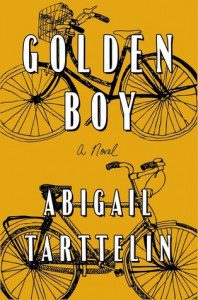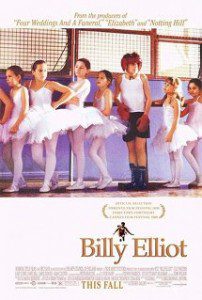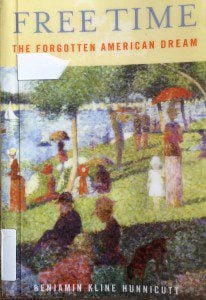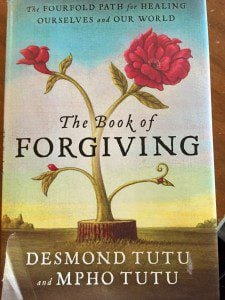Most of us, irrespective of our biological sex, have some masculine aspects of ourselves, as well as some feminine aspects. In Jungian psychology, our inner masculine is called our animus and our inner feminine our anima. And one of the most common examples is that in Jungian dream analysis, irrespective of your biological sex, if you see a female figure in your dreams, that female figure represents both someone in the external world and some aspect of your anima, the feminine aspect of your unconscious. Likewise, if there is male figure in your dreams, that man represents both someone in the external world as well as your animus, the masculine aspect of your unconscious. And part of the journey toward maturity (what Jung called “individuation”) is becoming more conscious of what previously dwelled only in our unconscious, which includes becoming increasingly aware of both our anima and animus, our inner masculine and our inner feminine.
To say more about how all of us, irrespective of our biological sex, have both masculine and feminine aspects to ourselves — as well as how there are many diverse combinations of maleness and femaleness, of masculinity and femininity — it is sometimes helpful to distinguish between gender identity, gender expression, biological sex, and attraction/orientation. Those are four different attributes that are each on a spectrum, and can manifest themselves in many diverse varieties.
Here’s one way I’ve seen it described. Gender Identity is in your mind. Inside your head, do you think of yourself as more of a woman or man? The gender identity spectrum is further complicated for individuals who experiences themselves as both a man and a woman (what is sometimes known as “two-spirit”), genderqueer. In contrast, others identify are genderless. Again, gender identity is how you think of yourself internally, inside your head.
Gender Expression is different. It is how you appear externally. Do you present yourself to others as more  masculine or more feminine, androgynous or gender neutral? And if gender identity (how you identity yourself in your head) and gender expression (how you present yourself to other people) seems hard to pin down, one’s biological sex can seem, at first, to be more straightforwardly determined by your genes. But there is a spectrum here as well. For example, intersexuals (formally known as hermaphrodites) have chromosomal genotypes and sexual phenotypes other than a simple XY-male and XX-female. Many transgender individuals also identify as male or female in a way that differs from what is assigned to them by biological science. Along these lines, if you are looking for some great summer reading, there is a new hard-to-put-down novel by Abigail Tarttelin titled Golden Boy that is about a young intersexual growing up in England. I just finished it a few days ago, and would recommend it to you. If you do read it, I would be interested to hear in the comments section about how you experience the novel.
masculine or more feminine, androgynous or gender neutral? And if gender identity (how you identity yourself in your head) and gender expression (how you present yourself to other people) seems hard to pin down, one’s biological sex can seem, at first, to be more straightforwardly determined by your genes. But there is a spectrum here as well. For example, intersexuals (formally known as hermaphrodites) have chromosomal genotypes and sexual phenotypes other than a simple XY-male and XX-female. Many transgender individuals also identify as male or female in a way that differs from what is assigned to them by biological science. Along these lines, if you are looking for some great summer reading, there is a new hard-to-put-down novel by Abigail Tarttelin titled Golden Boy that is about a young intersexual growing up in England. I just finished it a few days ago, and would recommend it to you. If you do read it, I would be interested to hear in the comments section about how you experience the novel.
As another example, I received an email last week of information about this year’s Unitarian Universalist General Assembly in Louisville, Kentucky that included this notice of “Important Information about Restrooms”:
For transgender and/or gender non-conforming people, the use of public restrooms can come with emotional and physical harassment. As a step toward being a Welcoming Assembly, restrooms inside the Plenary Hall, closest to the Plenary Hall, as well as at least one bathroom on the other floors will be designated for use by all genders. Gender-specific men’s and women’s restrooms are available inside the Exhibit Hall and in other sections of the convention center. Bathrooms that will be designated as Gender Neutral were formerly “men’s” and “women’s” restrooms that have been reassigned as Gender Neutral. This means that most Gender Neutral restrooms will be multi-stall facilities and some will have urinals in them. So before you step up to a urinal in a restroom that is designated as Gender Neutral, be advised that it is probable that other-gendered people will be coming in to use the stalls. For those people who might be uncomfortable walking by someone using a urinal, you may want to choose a different bathroom.
I appreciate the frankness of this email and the organizers thinking through the real-world implications of their steps towards greater inclusivity. To continue with the email notice, here’s my favorite part: “In all restrooms we ask you to trust that individuals know which restroom is most comfortable and appropriate for them.” I see that line as potentially humorous only in the sense of it being a barb deflating the hubris of those individuals who feel like they know so much about a stranger that they are in a position to tell that stranger what restroom is appropriate. But as we’ve been exploring, that is to mistake gender expression (the way someone may appear to you) with gender identity (how an individual experiences him or herself internally), and doesn’t account necessarily for biological sex, which might well be more complicated than initial appearances. The email from the UUA that all GA attendees received concludes that,
We invite compassionate and ongoing dialogue around these issues, and as part of our work toward right relationship, it is important to remember that personal processing should not be done with transgender and/or gender non-conforming people. We encourage you to contact a GA chaplain if you need support in this work.
The year’s annual meeting in Louisville will be my second Unitarian Universalist General Assembly, and part of what impressed me most about my first GA last year in Phoenix is precisely all the effort that went into trying to be in right relationship with each other.
The first principle of Unitarian Universalism is the “inherent worth and dignity of every person,” but there are so many places in our culture where the able-bodied, English-speaking, straight, white male continues to be the norm against which everything else is measured — which is convenient for me…but which can be deeply alienating for many others. And we’re continually seeing the uproar that results when straight, white, male privilege is threatened in this country. But as you’ve heard me say before, it’s vital to remember in multicultural work that, “The loss of privilege is not the same as reverse discrimination.” And Unitarian Universalism seeks to be a movement in which we are living into a becoming a beloved community in which we can be together as well as be ourselves, in all our diversity.
Speaking of right relationship, in my quick overview of gender identity (how you identity yourself in your head), gender expression (how you present yourself to other people), and your biological sex, I still haven’t gotten to the fourth attribute of attraction/orientation, what’s in your heart: whether you are drawn to men/males/masculinity, women/females/femininity, both, or neither.
I should probably reassure you at is point that all of the above is related to this post’s title of “The Sacred Masculine.” Part of the point I’m trying to make is that I could imagine a woman thinking that, “A post on the sacred masculine doesn’t pertain to me” or a man thinking that, “The divine feminine doesn’t pertain to me.” And part of what I was trying to do in my quick survey of gender identity, gender expression, biological sex, and attraction is to show that we are all on a spectrum regarding words like masculinity and femininity, perhaps more so than we often admit or are currently conscious of.
 To continue to explore this dynamic, let me give you an example from popular culture that comes to mind. The film Billy Elliot is a 2000 British drama set in northern England during a coal miners’ strike in the mid-1980s. The main character, Billy, is an 11-year-old, who is biologically a boy, but who wants to be a ballet dancer, a traditionally feminine role in Western culture — and certainly in the small mining town where he lives. Billy feels called to do “feminine stuff” like dancing, but he doesn’t want to do other “feminine stuff” like wear a tutu.
To continue to explore this dynamic, let me give you an example from popular culture that comes to mind. The film Billy Elliot is a 2000 British drama set in northern England during a coal miners’ strike in the mid-1980s. The main character, Billy, is an 11-year-old, who is biologically a boy, but who wants to be a ballet dancer, a traditionally feminine role in Western culture — and certainly in the small mining town where he lives. Billy feels called to do “feminine stuff” like dancing, but he doesn’t want to do other “feminine stuff” like wear a tutu.
Billy’s friend Michael, however, is also biologically male, and although Michael doesn’t want to be a ballerina, he is interested wearing dresses and lipstick. And he is attracted to Billy, an attraction that Billy doesn’t share. Being in right relationship with one another — when we have sometimes conflicting wants, desires, expectations, conceptions, and understandings — is difficult work. But it is good work, meaningful work, and potentially beautiful and transformative work that we are invited to journey into together.
There is also much to be said about how many aspects of our gender norms and expectations are socially constructed. But for now let me say it this way as a continued invitation for all of us to consider the ways in which the sacred masculine and the sacred feminine may apply to almost all of us, irrespective of biological sex. If you identify as female, do you sometimes wear pants or shorts instead of a dress? Do you have short hair, play sports, or vote in elections. Do you work outside the home — or want he freedom, if you choose, to be a religious leader, corporate executive, or even President of the United States? All the above at one time — or even now in some circles — are thought to be best reserved for men or considered as masculine traits or masculine roles. I invite you to consider if the women’s liberation movement can, in this sense, be seen as an expression of both a healthy masculinity and a healthy femininity (perhaps even taping into the sacred masculine and sacred feminine) — all within single individuals.
Or, to flip the tables, is Billy Eliot’s drive to be a ballerina in a misogynist (and misandrist) culture and his friend Michael’s transgressive cross-dressing and same-sex attraction also related to a yearning for the wholeness of a healthy and sacred masculinity and femininity within a single individual? For related reasons, some men choose to stay home, cook, and be the primary caregiver for children, which are considered traditionally feminine roles.
To use classic archetypes, masculine energy is often described as bright, hot, hard, active, above, up, external, and solid. Feminine energy, in turn, is traditionally described as dark, cool, soft, still, down, interior, and empty. The perceived value of those two sets of words is almost inevitably shaped by our culture’s misogyny, sexism, and heteronormativity. The invitation, however, is to experience the sense in which almost everyone has the potential to realize a healthy masculinity and a healthy femininity within themselves over the course of a lifetime. There are times when each of us needs to run bright, hot, hard, active, above, up, and external — and times when each of us needs to turn inward to the dark, cool, soft, still, down, and empty. And I invite you to consider which of those seasons you currently find yourself journeying through, as well as how that related to the waxing and waning of feminine or masculine energy within yourself or of those closest to you.
And when I add the word sacred to these classic archetypes, as in “sacred masculine” or “sacred feminine,” at least part of what I am referring to is the transformation that happens when our individual masculine and feminine energy is experienced as part of a larger whole — what we Unitarian Universalists like to call the “interdependent web of all existence.” In contrast, the unhealthy masculine tends to be narcissistic, always acting impulsively without consideration of the impact on others. In the words of theologian Matthew Fox, this unhealthy hyper-masculinity is the extreme in which:
Male means winning (being number one in sports, business, politics, academia), going to war (“kill or be killed”), being rational, not emotional (“boys don’t cry”), and embracing homophobia (fear of male affection). Male means domination, lording over others — whether nature, one’s own body, women, or others…. [This form of masculinity] reveals itself in empire building and witch burning, inquisitions and crusades, in banishing of the goddess and the Divine Feminine, in making a scapegoat of pleasure and sexuality.
This chauvinistic style of masculinity is one-sided, and is characterized by “power-over” instead of “power-with.” A tragic recent example is the release of a report that, “26,000 people in the [U.S.] armed forces were sexually assaulted last year, up from 19,000 in 2010.” Those numbers represent masculine energy gone awry.
In religious circles, another all-too-common example of masculinity gone awry is when the Sacred Masculine metaphor of Father Sky — of looking up in awe and wonder at the beauty of the cosmos, which is meant to balance the Sacred Feminine metaphor of Mother Earth — devolves into a literal understand of a Sky Father: worship of a literal male human figure who is imagined to live in the sky and sit in judgment of humanity. In contrast to the potentially life-giving metaphor of Father Sky, a Sky Father is often an anthropomorphized incarnation of the worst and most unhealthy aspects of masculine energy: bright, hot, hard, active, above, up, and external. Such misunderstandings lead to harmful theological claims such as, “God (understood as a “Sky Father”) punished a city or group with a natural disasters such as an earthquake, tornado, hurricane, or tsunami. It is a contemporary analogue to stories of Zeus hurling lightning bolts down at humans from Mount Olympus.
And where a “Sky Father” theology reigns, men tend to be the beneficiaries. And don’t be fooled by the propaganda that, “We cloister our women at home, don’t let them drive, or keep their bodies covered up because we respect them so much, want to protect them, and put them up on a pedestal.” The truth, as feminist theologian Mary Daly liked to say, is that, “Where God is male, male is God.”
At the same time, a fuller truth is that patriarchal cultures are deeply unhealthy for many men as well. Men become deeply wounded when they spend a lifetime living a chauvinistic, hyper-masculinity. And if unhealthy masculinity is the only way that you know how to live, then Fox writes that the only way to survive is to try to “live in the world without having vulnerability. They develop an armor and ability to move through this world that requires men to exhaust themselves trying to make money.” Do you know anyone like that? Someone who develops emotional armor to move through the world without vulnerability and who exhausts themselves to make money — or because their self-worth is all wrapped up in their job, what they do instead of who they are naturally? Again, that’s masculine energy gone awry.
To be honest, I can identify with the seductive lure of efficiency: of wanting to get things done, and check tasks off my “to do” list. But the shadow side is that such a relentless approach to life can be exhausting, and lead to burn out, flashes of anger, or impatience. And, ironically, all that emotional armor that is meant to protect from vulnerability can impede genuine growth and maturity, which sometimes comes only through pain. Joseph Jastab, who has written about masculine spirituality says, “a troubling notion for many [men is] the possibility that we do not gain [wisdom] through our victories, but through our defeats.”
I said earlier that when I use the term “sacred masculine” (or “sacred feminine”) at least part of what I’m referring to is when the masculine and feminine energy within us is experienced as part of a larger whole — what we UUs like to call the “interdependent web of all existence.” And in our age of climate change, perhaps one of the most powerful manifestations of the Sacred Masculine is the call to invest in alternative energies. Our current use of fossil fuels, fracking, and mountain top removal mining is a classic and tragic example of unhealthy masculine energy that is about “power over” Mother Earth: taking what we want for immediate gratification without regard for replenishment or the impact on future generations. As some writers have contended “rape,” is not too strong a word for how we have treated Mother Earth in the industrial age. In contrast, the search for sustainable, closed-loop energy sources is a compelling example of “power with” instead of “power over.”
And the critical difference between “power over” and “power with” is compassion, the capacity to sympathize with the emotional experience of another person. Love is what makes all the different in moving toward a healthy, individuated masculine — caring not only about yourself, but deeply feeling connected to another person. In the poetic words of e.e. cummings’ words: “i carry your heart with me(i carry it in my heart)i am never without it(anywhere i go you go.” That’s the felt inner experience of the interdependent web of all existence.
I invite you to the final stanza of that e.e. cummings poem slowly and reflectively. As you do so, I invite you open your heart — to feel the transformative compassion of becoming more connected with everyone and everything both in the room you currently find yourself in and and around the world in the interdependent web of all existence. If the following language is meaningful to you, I invite you to look out any nearby windows and open yourself to feeling connected to Father Sky and Mother Earth, as if they were your family. Open yourself to the energies stirring within you of the sacred feminine and the sacred masculine.
I invite you to hear the call of the Sacred Masculine in the words of e.e. cummings:
here is the deepest secret nobody knows
(here is the root of the root and the bud of the bud
and the sky of the sky of a tree called life;which grows
higher than soul can hope or mind can hide)
and this is the wonder that’s keeping the stars apart
i carry your heart(i carry it in my heart)
Notes
1 For my survey of gender identity, gender expression, biological sex, and attraction/orientation, I’m adapting a helpful visual aid called the Genderbread Person, available at http://itspronouncedmetrosexual.com/wp-content/uploads/2012/03/Genderbread-2.1.jpg.
2 “Male means winning….” — Matthew Fox, The Hidden Spirituality of Men: Ten Metaphors to Awaken the Sacred Masculine, xxvi-xxvii.
3 “Sex Assault Reports Rise in Military,” available at http://www.nytimes.com/2010/03/17/us/17assault.html.
4 “Sky Fathers” – Fox, The Hidden Spirituality of Men, 7. See also the section on “Promise Keepers,” 96-97.
5 For more on Mary Daly, see “Mary Daly, a Leader in Feminist Theology, Dies at 81,” available at http://www.nytimes.com/2010/01/07/education/07daly.html.
6 “if unhealthy masculinity is the only way that you know how to live” — on the subject of unhealthy models of masculinity, Matthew Fox relates the ancient Greek myth of Icarus and Daedelaus:
Daedelaus is a seriously flawed father figure; he had murdered his nephew out of envy, which is what led to father and son being vanished to Crete in the first place. Daedalus hardly represents the model of a healthy father, adult or elder. Quite the contrary, Daedalus represents the shadow side of the teacher or parent; he is the elder who cannot abide being outshone and overtaken by the success of youth. How ready was Daedalus to watch his son take wing and fly successfully, to someday fly farther without him? Perhaps the son’s reckless flight was a reaction to this paternal envy; Icarus was challenging his father, and self-destructed in the process. Seen this way, the story becomes less a direct condemnation of the excess of youth (which is a convenient stance for adults….). Instead, this story is a tragic parable about the importance of intergenerational wisdom and intergenerational communication. (Fox, The Hidden Spirituality of Men, 34-35)
7 “live in the world without having vulnerability.” — Fox, The Hidden Spirituality of Men, 58
8 “we do not gain [wisdom] through our victories, but through our defeats.” — Fox, The Hidden Spirituality of Men, 102.
9 “power with” instead of “power over” and alternative energies — Fox, The Hidden Spirituality of Men, 32, 27.
The Rev. Dr. Carl Gregg is a trained spiritual director, a D.Min. graduate of San Francisco Theological Seminary, and the minister of the Unitarian Universalist Congregation of Frederick, Maryland. Follow him on Facebook (facebook.com/carlgregg) and Twitter (@carlgregg).
Learn more about Unitarian Universalism: http://www.uua.org/beliefs/principles














